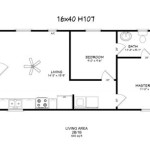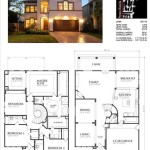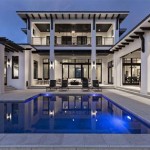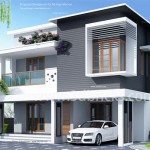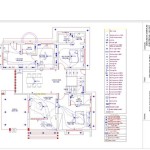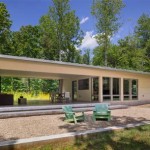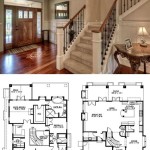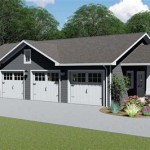British Home Plans: A Guide to Traditional and Modern Designs
British home plans encompass a wide range of architectural styles, reflecting centuries of evolving design preferences and construction techniques. From classic cottages to contemporary builds, understanding the key features of these plans can be helpful for prospective homeowners or those interested in architectural history.
Traditional British home designs often incorporate elements inspired by vernacular architecture, emphasizing functionality and harmony with the surrounding environment. Common features include steeply pitched roofs, exposed beams, and natural materials such as stone and brick. These materials not only contribute to aesthetic appeal but also provide durability and insulation against the often-challenging British climate.
Cottages are a quintessential example of traditional British housing. Characterized by their quaint, compact design, cottages often feature thatched or slate roofs, small-paned windows, and exposed timber framing. Originally designed for rural workers, many cottages have been updated and modernized while retaining their original charm.
Victorian-era homes represent another significant period in British architectural history. These homes often feature elaborate ornamentation, bay windows, and decorative brickwork. Larger Victorian houses might include turrets, towers, and intricate gables, reflecting the prosperity and grandeur of the era. Inside, high ceilings, fireplaces, and detailed moldings are common features.
The Georgian and Edwardian periods also left their mark on British home design. Georgian homes are known for their symmetry, sash windows, and elegant proportions. Edwardian houses often feature larger rooms, simpler ornamentation, and a focus on light and airiness compared to their Victorian predecessors.
Moving into the 20th century, British architecture saw a shift towards more functional and minimalist designs. The Arts and Crafts movement emphasized craftsmanship and the use of natural materials, while the modernist movement embraced clean lines, open floor plans, and large windows. These styles laid the groundwork for many contemporary British home designs.
Modern British home plans often prioritize energy efficiency and sustainability. Features such as solar panels, rainwater harvesting systems, and high-performance insulation are becoming increasingly common. Open-plan living spaces, large windows to maximize natural light, and flexible multi-purpose rooms are also prominent features of contemporary designs.
While embracing modern technologies and design principles, many contemporary British home plans still draw inspiration from traditional styles. This can result in homes that blend the charm of classic architecture with the functionality and efficiency of modern building techniques. The use of reclaimed materials, traditional building methods, and sympathetic landscaping can help to create a sense of continuity and connection to the past.
When considering British home plans, factors such as plot size, local planning regulations, and budget play crucial roles. Consulting with architects and builders experienced in British design principles is essential to ensure a successful project. Careful planning and attention to detail can help to create a home that is both aesthetically pleasing and practical for modern living.
The variety of British home plans available provides numerous options for prospective homeowners. Understanding the different styles and their key features can help individuals choose a design that reflects their personal preferences and meets their specific needs. Whether drawn to the quaint charm of a cottage or the sleek lines of a modern build, exploring the rich tapestry of British architecture can be a rewarding experience.
Accessibility is an increasingly important consideration in modern British home design. Incorporating features like wider doorways, level access entrances, and adaptable bathrooms can ensure that homes are accessible to people with disabilities or mobility issues. These features not only enhance the usability of the home but also contribute to its long-term value.
Technological integration is another key trend in British home plans. Smart home technology, including automated lighting, heating, and security systems, is becoming increasingly popular. These systems can enhance comfort, convenience, and energy efficiency while also providing greater control over the home environment.
Outdoor living spaces are also highly valued in contemporary British home designs. Patios, balconies, and gardens are often integrated seamlessly with the interior living areas, creating spaces for relaxation and entertainment. Careful landscaping, the use of natural materials, and the incorporation of water features can further enhance the enjoyment of outdoor spaces.
The evolution of British home plans continues to reflect changing lifestyles, technological advancements, and environmental considerations. By understanding the key features of traditional and modern designs, individuals can make informed decisions when planning their own homes, ensuring that they create spaces that are both beautiful and functional for years to come.

House Plan Plans Architectural And Home Design

Floor Plan Design House Plans Bungalow Architecture

Vintage Home Plans Country House Floor Plan How To

Plate 4 First Floor Plan Apartment Plans Luxury House

Farmhouse Style House Plans The Dilwyn Houseplansdirect

English Cottage Style Home Plan 6970am Architectural Designs House Plans

8 Floor Plans Of Iconic British Tv Homes

Luxury European Manor House Plans And Cau

Plate 4 Ground Plan Floor Plans Mansion English Country House

Marmade House Holiday Cottage Bath Layout

